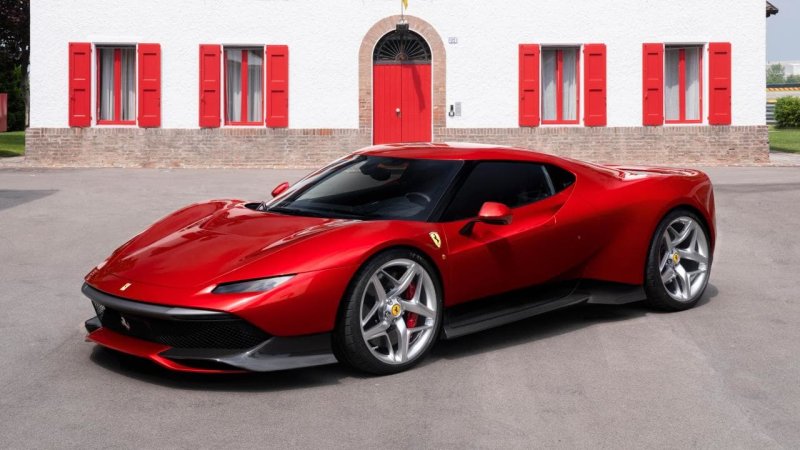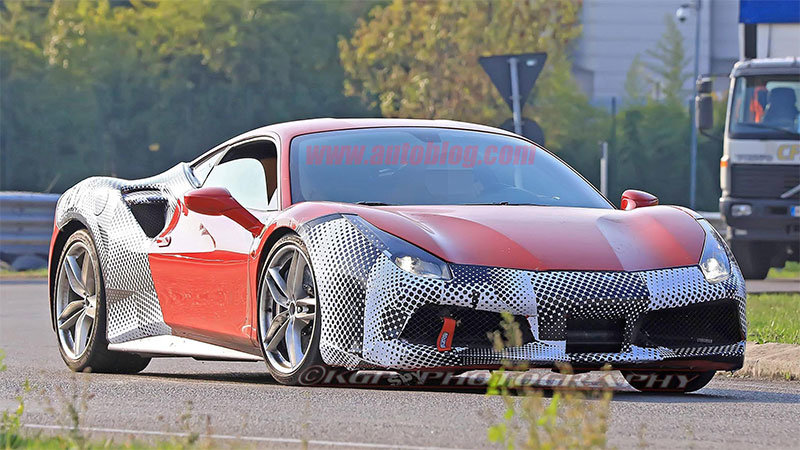The majority of the cars that have rolled out of the gates at Maranello can be described as varying degrees of spectacular. Still, until you settle in behind the wheel, you wonder if a real Ferrari can live up to the hype.
The first thing I took note of in the Ferrari 488 Spider was the immense and nearly instantaneous acceleration into questionable speeds. It should have been obvious from the start, but the rate that this car builds speeds still managed to surprise me, like the cold wind on a January morning. You’ve checked the weather on your phone and you know it’s going to be cold, but you still wince with that first sharp breeze on your cheek.
It’s a totally different sensation than something like the Dodge Viper. The Viper requires deliberate effort for everything. Getting in and out is a pain in the ass. The clutch is long and heavy and the pedal box is tiny. The hefty steering requires some strength, especially at low speeds. The shifter wholly mechanical thing that requires a little more motivation than you would expect. It’s not easy and it’s not trying to be, just so you’re not tempted to underestimate it.
By comparison, the Ferrari is cake. The doors open wide allowing easy access, made even easier with the retractable hardtop stowed away. The cabin, while completely covered in black leather, is open enough to not feel claustrophobic. The steering is light but doesn’t feel loose and the 7-speed dual-clutch transmission can be left in automatic to make things easier. In sport mode, the exhaust is relatively subdued, allowing you to actually enjoy the stereo should you choose to. But goose the gas and a wave of panic and exhilaration momentarily wash away any other thoughts.
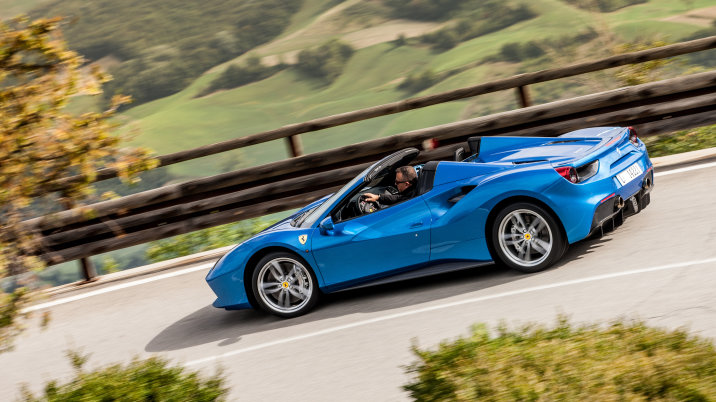
The 488 Spider packs a mid-mounted 3.9-liter twin-turbocharged V8 making 661 horsepower and 561 lb-ft of torque. It’s not quite the screamer of past Ferrari V8s, but what it lacks in aural excitement it makes up for in brute force. The old 4.5-liter V8 in the Ferrari 458 was powerful, but most of that power was at the top of the rev range. On the other hand, the 488 feels strong in any gear at any RPM. Boost is limited in lower gears, changing the power band in an effort to dull the turbo lag somer. While there isn’t a big kick when boost comes on, it doesn’t feel quite like a naturally-aspirated engine either. Once you’re in boost, complaints seem to fall by the wayside.
It’s amazing just how quickly the engine reaches that 8,000 rpm redline; That at least hasn’t been lost to with the move to forced induction. The rise and fall of the needle in that beautiful blue center-mounted tachometer seems weightless, as the slightest tip of your toe sends the whole thing spinning onward and upward. The engineers at Maranello have crafted a love letter to the internal combustion engine using lightweight components and a flat-plane crank, and placed it in the heart of this car. Yes, it’s not the high-strung naturally-aspirated masterpiece of yesteryear, but it’s hugely promising for the future.
It’s a shame the whole thing doesn’t sound better. The turbos muffle the sound a bit and there’s a distinct eruption from the exhaust at about 3,000 rpm as everything behind you opens up. If the tone was a bit more linear, it would help matters. The Ferrari 458 Speciale had the same problem. The 488 Spider also should be kept in Race mode if you want to really hear it, because he standard Sport setting is just too quiet. Still, kiss that redline at wide-open throttle and all your complaints will fall by the wayside. Flat out, the engine is at its best.
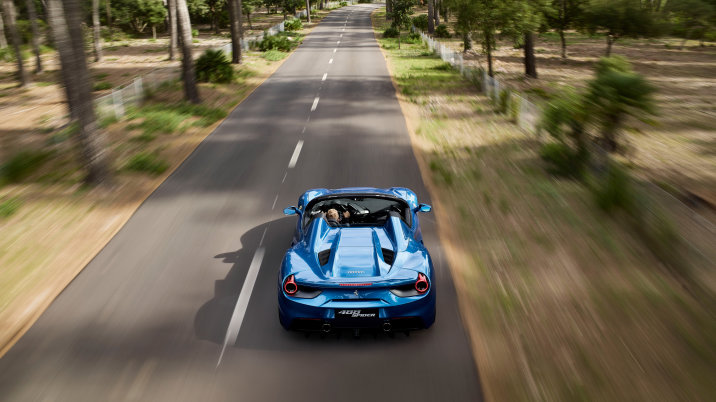
It’s the same sort of principle that applies to the 488 Spider’s roof. The GTB coupe is arguably better looking (and it gets the glass engine cover), but there’s something to be said about enjoying a 661 horsepower mid-engine sports car with limitless headroom. Sure, an owner could ostensibly take this car to the track, but the coupe is a far better option if that’s your cup of tea. For a pure street car, the Spider makes one hell of a case for itself. Put the top town and let the sunshine wash your worries away.
In its softest setting, the suspension proved surprisingly compliant on Michigan streets, even with the optional 20-inch wheels. It’s not quite plush, but it’s far more compliant and forgiving than something like the Viper, BMW M4, or Shelby GT350. Even some sport sedans don’t ride as well as this Ferrari. The best part is that you can run in Race mode with the soft suspension, the go-to setting for any performance car on the street. For daily driving, you want all of the power and the full exhaust, but you want to avoid unnecessary impacts to your spine.
Drawbacks versus the coupe are minimal. At 3 seconds dead, it’s just as quick to 62 mph as the hardtop. The top speed has been lowered to just 202 mph, but that shouldn’t be anyone’s deal breaker. The retractable hardtop is quieter than a canvas roof but it will never provide the same level of isolation as a true coupe. The rear window does roll down with the top up, meaning you can hear the engine better than you could with a coupe. The top goes up and down in seconds and can do so even while moving.
It’s not a small car by any stretch, but it is relatively lightweight one, thanks to the extensive use of aluminum and carbon fiber. At 3,362 lbs, the 488 Spider is just about 110 lbs more than the coupe. Still it moves with a quickness and a grace that’s nearly unmatched on the road. Everything is immediate, from the steering to the brakes to the crack of the exhaust as the transmission snaps off gears. What feels big and wide at low speeds shrinks around you as each request is almost immediately answered.
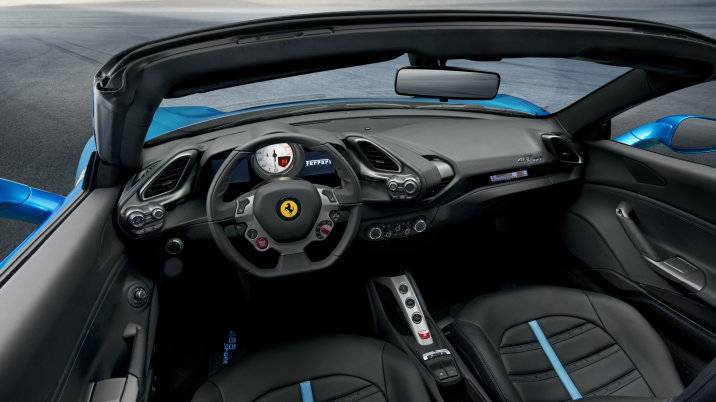
There’s a directness to the 488 Spider that’s slightly unsettling at first. Its quick responses can make the car feel twitchy if you don’t reset your expectations. A small degree of input can move you over a lane or two if you’re not careful. Afterward, anything short of a Porsche, a McLaren, or a Lamborghini feels vague and distant. The carbon-ceramic brake rotors are larger than the diameter of the wheels on my first car, and when combined with some excellent Michelin rubber provide ample amounts of stopping power.
They also provide plenty of grip in a corner. When you stab the brakes and turn the wheel, the weight shifts evenly and predictably. There’s enough freedom to have fun without losing control. It’s really not that difficult to drive the 488 Spider fast, but the reassuring part is that anyone can feel like a hero in this car without pushing the limits of safety or sanity.
The 488 Spider isn’t perfect. While the brakes are powerful, they’re grabby and difficult to modulate at low speeds – not unusual for carbon-ceramic brakes, but still, disconcerting. The infotainment system is next to non-existent, with a near-useless map and no support for Android Auto. For a car that’s likely to be used to cruise, that’s a letdown. The exhaust in Sport mode was too quiet and not as sweetly sonorous as past Ferraris, detracting a bit from the whole experience. That said, it’s a beautiful machine, even if a lot of the design elements were more function than form. At least it’s all purposeful. This Blu Corsa paint finally convinced me that Ferrari’s can look truly wonderful in a shade other than red or yellow.


